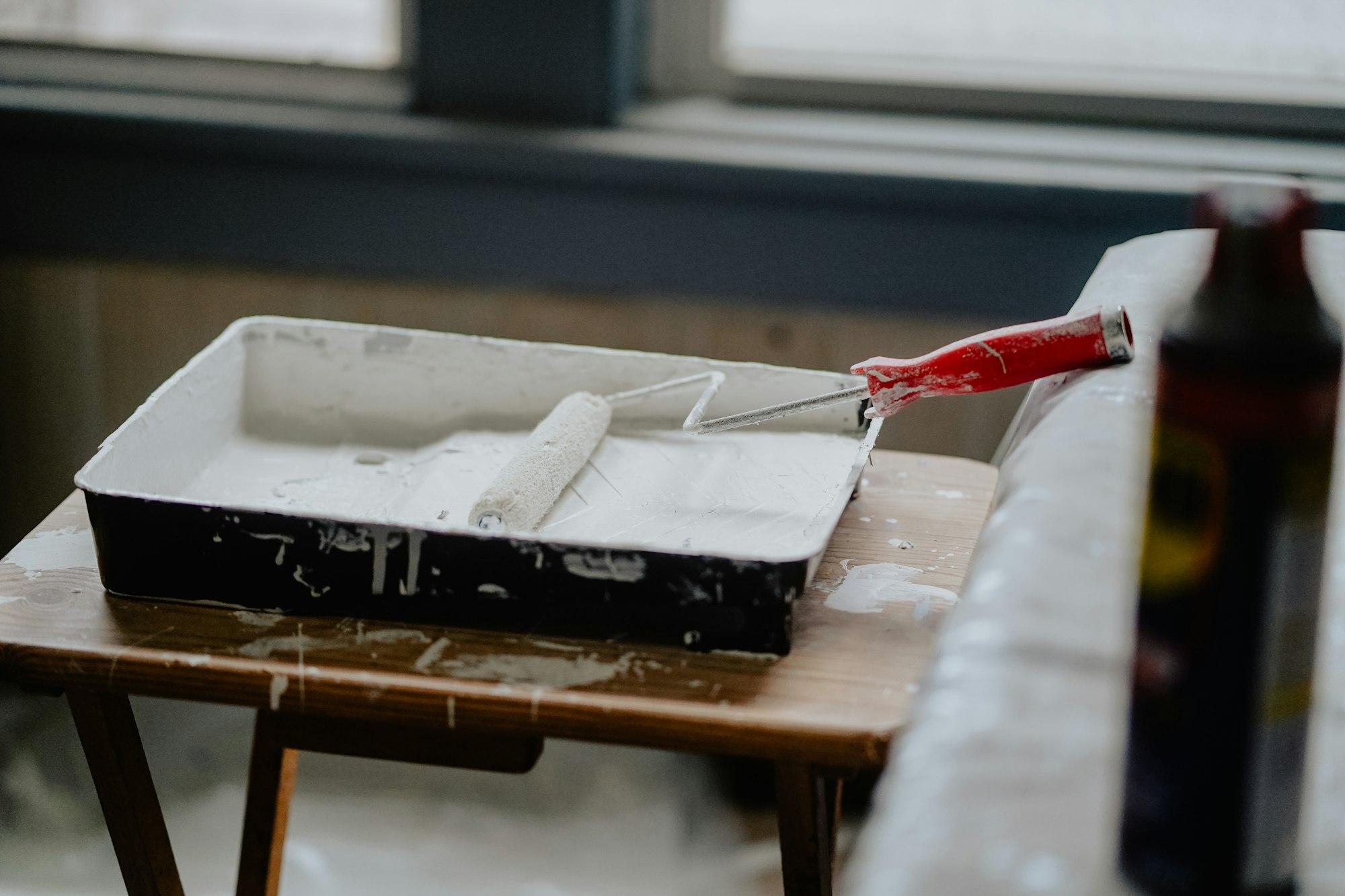Setting a Realistic Budget for Big Home Projects: A Step-by-Step Guide
Learn how to set a realistic budget for big home projects with tips on prioritizing expenses, adding a contingency fund, and shopping smart for furniture and decor. Use Spoken.io to compare prices and stay within budget for a successful project.

Photo by Karl Solano / Unsplash
Planning a big home project? Whether it’s a full room renovation or a furniture refresh, setting a realistic budget is key to avoiding overspending and keeping stress low. Setting a realistic budget helps you stay on track, avoid overspending, and make better purchasing decisions for furniture, decor, and other essentials. Here’s a step-by-step guide to creating a budget that works for your home project.
Define Your Project Scope and Goals
Start by outlining the scope and purpose of your project. Are you refreshing a single room with new furniture and decor, or are you undertaking a complete renovation? Clearly defining the goals and scope will provide a foundation for your budget.
Tips:
- List your primary goals: Do you need more storage, a new style, or better functionality?
- Break down each part of the project, noting which elements are essential and which are optional. This helps you avoid overspending on features that aren't necessary to achieve your vision.
Research Average Costs for Materials, Furniture, and Labor
Understanding the average costs of furniture, decor, materials, and labor will help you establish a realistic budget. Furniture and decor can vary widely in price depending on quality and style, so getting a sense of these costs is crucial.
Tips:
- Use price comparison sites like Spoken.io to research the cost of big-ticket items, such as sofas, dining tables, and decor pieces. Comparison shopping can save you a significant amount.
- Obtain multiple quotes from contractors if you’re planning structural or labor-intensive changes. Even basic renovations can vary in cost based on materials, location, and labor rates.
Prioritize Essential vs. Optional Expenses
Once you have a clear sense of your goals and associated costs, it's time to prioritize. Identify which elements of the project are essential (e.g., replacing broken furniture, upgrading appliances) versus those that are nice-to-have but optional.
Tips:
- Create a list of “must-haves” that are crucial for achieving your vision and “nice-to-haves” that would be enjoyable but are not essential.
- Knowing your priorities will help you stay within budget if costs start to rise unexpectedly or if you need to cut back in certain areas.
Set a Flexible Budget Range and Add a Contingency Fund
Instead of a fixed budget, set a flexible range with a buffer to cover unforeseen costs. Adding a contingency fund of around 10-20% of your budget can protect you from financial surprises during the project.
Tips:
- Expect that unexpected expenses will likely come up, whether they’re small decor items you hadn’t considered or additional labor costs.
- A flexible budget and contingency fund provide breathing room, helping you handle these extra expenses without going over budget.
Consider Financing Options for Large Purchases
If your project includes high-cost items such as furniture or appliances, financing might be worth considering. Financing options, such as personal loans, 0% APR credit cards, or home equity loans, can help you fund these purchases while spreading out the payments.
Tips:
- Compare interest rates and payment terms for each financing option. Look for low-interest or 0% introductory APR offers on credit cards, which can be helpful for spreading out costs without accruing interest.
- Be cautious with financing to avoid taking on more debt than you can handle comfortably.
Shop Smart for Furniture and Decor
Furniture and decor are often the most visible aspects of a home project and can easily push you over budget if not approached strategically. With a little planning, you can find high-quality pieces that fit your budget.
Tips:
- Use price comparison tools like Spoken.io to find the best deals on furniture and decor, from sofas to lighting fixtures. Spoken’s platform allows you to compare prices across major retailers, helping you get the best deal.
- Determine where to save versus splurge. For example, invest in high-quality seating or bedding that will last, but consider more affordable options for decorative accents.
Track Expenses and Make Adjustments as Needed
Once your project is underway, it's essential to monitor your spending to ensure you stay within budget. Tracking expenses will help you spot areas where you might be overspending or need to adjust.
Tips:
- Use a simple spreadsheet or budgeting app to log all expenses as you go. This helps you stay organized and keep track of where each dollar is going.
- Review expenses weekly to identify any overspending early and make adjustments if necessary. By staying on top of your spending, you can make small changes to stay within your budget.
Plan for Long-Term Maintenance and Upkeep Costs
A realistic budget should account for more than just the initial expenses. Consider the long-term costs of maintaining or replacing elements of your project. For instance, certain furniture pieces or finishes may require regular upkeep.
Tips:
- Include upkeep expenses in your budget, such as cleaning or repair costs for furniture and appliances. This will help ensure your project remains affordable over time.
- Remember that some choices (like high-maintenance materials) may increase maintenance costs. Choosing durable, low-maintenance options can be a smart long-term investment.
Conclusion
Creating a realistic budget for big home projects can make a world of difference, helping you stay organized, avoid unexpected financial strain, and make smarter decisions. Whether you're redecorating a room or undertaking a full renovation, this step-by-step approach ensures you’re fully prepared.
For even more savings, check out Spoken.io to compare prices on furniture, decor, and other home essentials across top retailers. Spoken can help you get the best deal, ensuring your project stays within budget and your home looks great!
Quick facts
How to budget a home renovation project?
To budget a home renovation project, list all necessary expenses, prioritize key areas, and get multiple quotes from contractors. Allocate 10-20% for unexpected costs to avoid overspending.
How to budget for a home addition?
To budget for a home addition, consider costs like permits, materials, labor, and utilities. Research average prices, get detailed estimates, and include a contingency fund for unforeseen expenses.
Is 100k enough to renovate a house?
A $100,000 budget can cover extensive renovations like updating kitchens and bathrooms, but costs vary by location, materials, and labor. Plan carefully and prioritize high-impact areas to maximize value.
What is the most expensive part of a home addition?
The most expensive part of a home addition is often the foundation and structural framing. Costs can increase further with plumbing, electrical work, and high-end materials.
How do you structure a home budget?
Structure a home budget by categorizing expenses into essentials, optional upgrades, and contingency funds. Track costs regularly, get detailed quotes, and adjust based on priorities and unexpected changes.
What is the cheapest foundation for a house addition?
A concrete slab foundation is often the cheapest option for a house addition, offering durability and affordability. However, it may not be suitable for all terrains or climates.

Geoff Abraham
Co-founder & President of Spoken
Geoff is the co-founder and President of Spoken. He is a Dad. He holds a BA from UT Austin (Plan II) and an MBA from Stanford. Geoff has built several successful businesses, including a bicycle taxi business in San Francisco which he ran for 10 years with his wife, Mimosa. He is an executive coach, and he actively invests in seed-stage startups via The Explorer Fund.
Read more